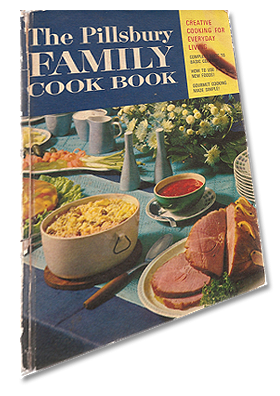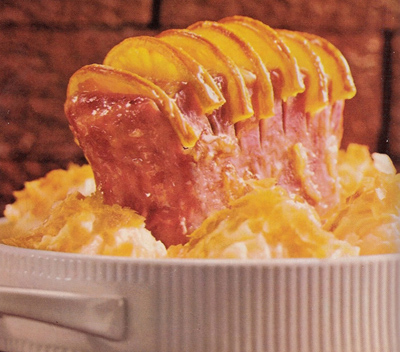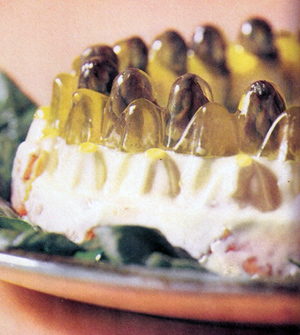Cookbook
by Andrew Boyd
Today, tasty treats. The University of Houston's College of Engineering presents this series about the machines that make our civilization run, and the people whose ingenuity created them.
"T"Today's food looks better, tastes better and is better," begins the cookbook. "Your job in this new world of fabulous eating is to … create … a healthy balance of varied and nutritious fare."
Sound advice for any cookbook. But let's read a little further. "Thanks to science, cooking becomes easier every day." "With new convenience foods … anyone who can read directions and … push buttons can be an accomplished … cook."

When The Pillsbury Family Cookbookwas first published in 1963, life was speeding up. In 1900, roughly 20 percent of women participated in the labor force. By 1960, that figure had doubled to 40 percent. But women were still expected to don their aprons and prepare meals their husbands would be proud of. So food distributors responded by elevating the status of prepared foods. Dehydrated potatoes. Instant coffee. They weren't just short cuts. They were the symbols of a new generation of skilled culinarians. The food industry told women they could have their cake and eat it, too.
The cookbook continues: "Foods in cans, bottles, and jars … are filled with new freshness, flavor, and quality." The cookbook's message? Unleash this potential! And that's what the recipes are designed to do.

The recipe for Orange-Glazed Luncheon Loaf calls for 12 ounces of unspecified canned meat with oranges, marmalade, and cloves.
Take the recipe for glazed shrimp, whose main ingredients are shrimp, French dressing, and unflavored gelatin. Mix the dressing and gelatin, dip the shrimp in, and chill — an appetizer sure to impress friends and family.
The chapter on salads contains page after page of gelled recipes. The Molded Shrimp-Asparagus Salad caught my eye because there's an accompanying picture. It's otherworldly, though probably not from a planet you'd want to visit. The ingredients? Mayonnaise, sour cream, shrimp, lemon-flavored gelatin, and frozen asparagus. A tip at the bottom of the recipe tells us that, if we desire, "Cooked fresh … asparagus may be substituted for the frozen…"

Molded Shrimp-Asparagus Salad
Cookbooks aren't just about recipes. They're a reflection of who we are. Today, cans are out; fresh is in. But the need for speed's still there. Carrots come in ready-to-eat, bite-size pieces. Lettuce is washed, cut, and sealed in air-tight plastic bags — complete with salad dressing and croutons. With fully 60 percent of women now holding jobs, easy to prepare, nutritional meals are essential to our health.
Gourmet Tuna Casserole. Speedy Chow Mein. Pork chops in canned cream of mushroom soup. That's who we were in 1963. What will today's cookbooks tell future generations about us?
I'm Andy Boyd at the University of Houston, where we're interested in the way inventive minds work.
Notes and References:
The Pillsbury Family Cook Book. New York: The Pillsbury Company, 1963.
Women in the Labor Force, 1900-2006. From the Web site of Infoplease: http://www.infoplease.com/ipa/A0104673.html. Accessed July 29, 2008.
Photos courtesy of The Pillsbury Family Cook Book.